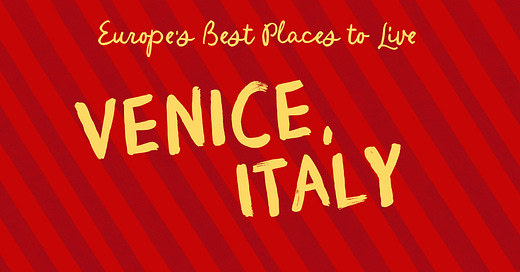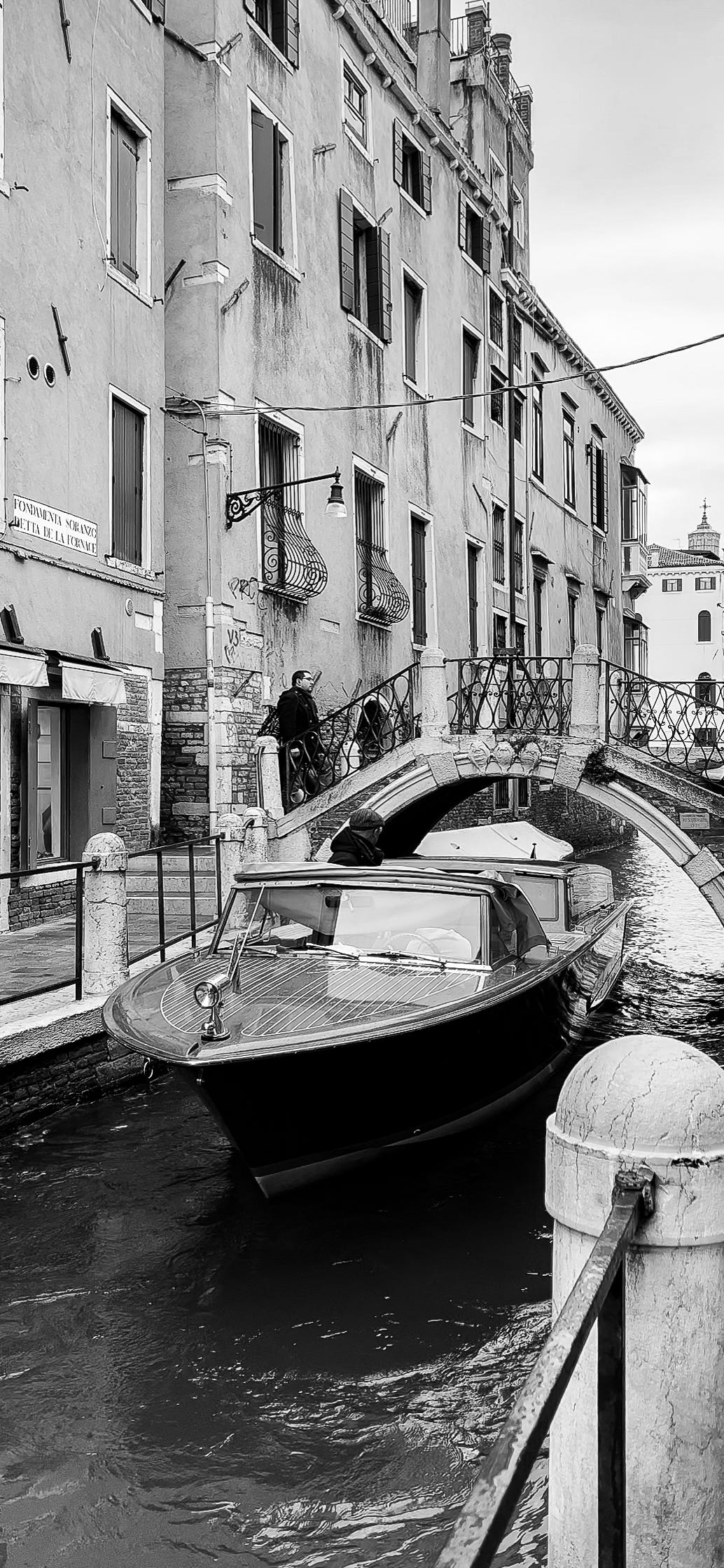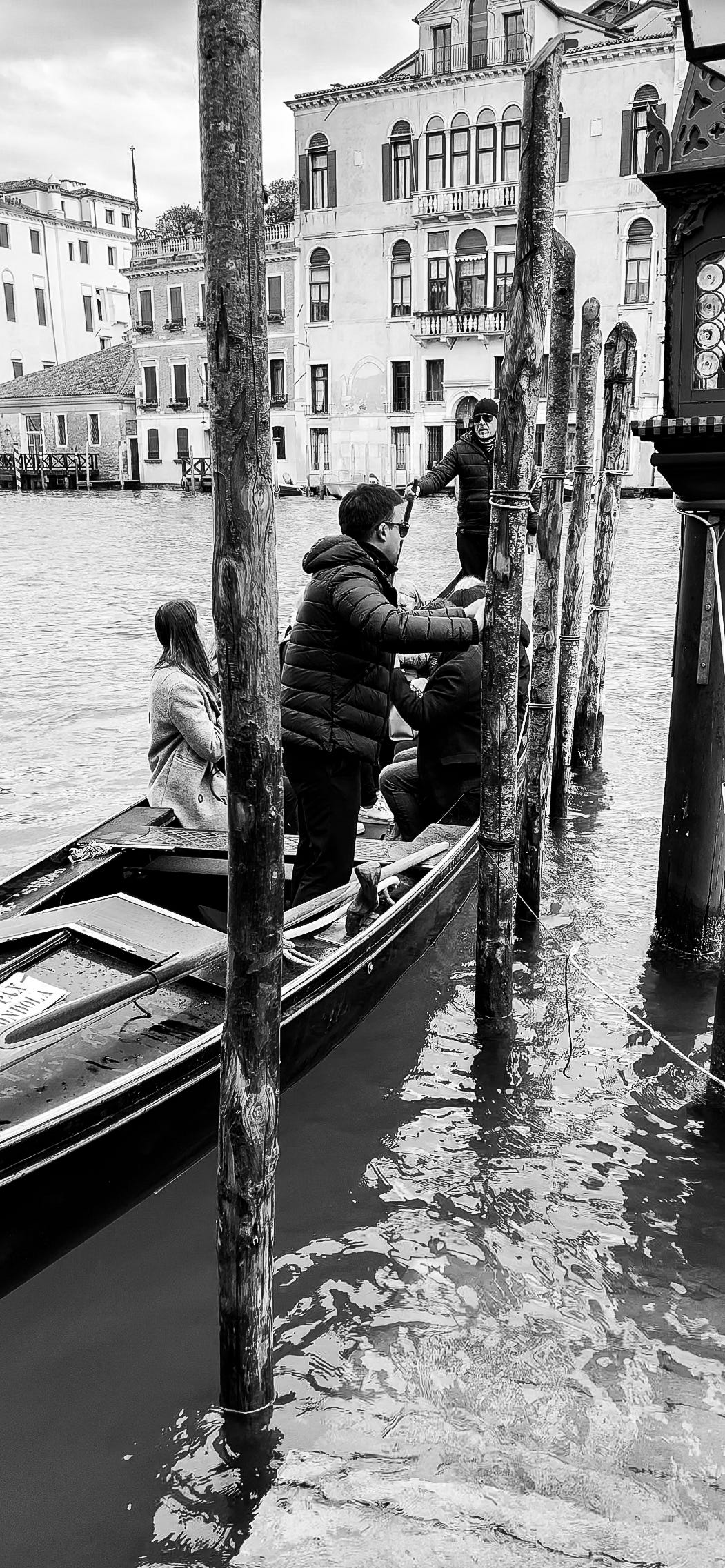Venice, Italy: Perfect if You Want a Fast-Moving Town Full of Life, Culture, Food, Fascinating People, and a Special Quality You Can't Find Anywhere Else
So long as you don't mind carrying a Christmas ham over 435 bridges
The very first time you first arrive in Venice, you’re gonna say to yourself, “Self, this place is magical. Self, I work remotely! Self, I could live here. Self, let’s do something that’ll make my bank account bleed.”
You’ll be instantly stupefied by the romance of it all, which hits you in the balls as soon as you step off the train. There is no warm-up period; no wandering around some asphalt parking lot 30 miles outside the city center looking for your rental car; no sheepishly waiting for a shuttle like you are Oliver Twist. The moment you exit the train station in Venice, you are in Venice—and that’s to say, you’re immediately surrounded by water…and things you don’t understand.
You will not understand, for example, how to do anything. In other cities, you’ll know how to hail a taxi or grab an Uber since most things roughly work the same way. Not in Venice. In Venice, you need to figure out how to be a sailor. You’ll stand there awkwardly with your suitcase, unsure how to navigate this labyrinth of water. Do you spring for a swanky, private wooden boat that’ll cruise you over to your hotel for a cool 90 euros? Do you attempt to figure out the schedule of the public water bus, packed full of people who will clearly laugh at you? Or, do you hoof it the old-fashioned way for forty sweaty, mortifying minutes with your suitcase dragging behind you like a dipshit, up and down the ancient steps of each and every stone foot bridge—of which there are 435 in total?
Whatever, YOU’RE IN VENICE. You can spend money like an oligarch. You can shell out ninety euros. You can cruise these waters. You love water! Everybody loves water, especially the Americans.
Americans get really excited when there’s water nearby. Maybe that’s because 60% of the population doesn’t live anywhere near the coast given that 90% of the land is in the middle. Or maybe it’s because Americans are stressed-out, strung-out ghouls, and being by the water has been scientifically proven to have calming, sedative effects. (Drugs!) Of course, it’s not just Americans: a European research organization called BlueHealth investigated the link between urban “blue spaces” and health, and sure enough: spending time next to water improves the whooo-ha-ha! out of your well-being. Not only does it improve your mental health, but you’re more likely to move your bum, too.
And really, who can argue with that? I’ve never met a European research institution whose word I didn’t follow blindly down a cobblestone alley.
So, right, we’re off to a good start. Water, CHECK. Mental health, CHECK. However, we should probably talk about ham.
I was in Venice in March, which seems like a miserable time to be anywhere in the world except Tahiti, but (a) I am a cold weather person and think hot weather people are villainous freaks; (b) honestly it was great and I only needed to buy one oversized umbrella that I promptly left under a table at a restaurant.
I stayed at a Sonder called “Salute Palace,” a name that immediately makes me think of childish jokes, and as soon as I walked in, I began interrogating the staff, as I am wont to do.
“What’s your favorite thing about living here?”
“What’s the worst thing about living here?”
“Where can I find the best negroni?”
These are questions I’ve become accustomed to asking everywhere I go. It’s my thing now. Not only is it a great way to do research, it’s also a great way to make friends with locals—the best kind of friends.
There at The Palace That Shall Not Be Named, I spoke with three local residents: a stylish mid-forties woman from England, a twenty-something guy from Romania, and a very cool Italian art student who’s originally not from the island. All three of these people were WILDLY NICE. Like, unusual levels of nice. They welcomed my questions as if we were the dearest of friends (I guess that’s called hospitality), and before I knew it, I was leading a full-on panel discussion about the pros and cons of living in this watery haven of ancient architecture.
“The buzz of the people! The energy! The city is so alive and full of life.” This comes from the Romanian, and the other two quickly agree. “Everyone’s so excited to be in Venice, you feel it in the air. It’s electric.”
“Tourism has been exceedingly difficult though, no?” I recall reading a striking ratio of three-hundred and sixty tourists to one local.
“You can tell who the tourists are and who the locals are by the way they walk. Venetians walk very, very, very fast. Tourists walk very, very, very slow. The Venetians will always be passing you on your left—they’re real people with real appointments to get to, just like everybody else.”
Alas, they aren’t wrong: it’s one of the first things I notice when I head out into the streets. Stomp, stomp, stomp—right past. I am walking as fast as my dumb little legs will let me, and still I can’t keep pace. It’s like they have rocket ships as legs. Even teenagers blow by, walking at the speed of gods. But, it’s not an aggressive walk, not necessarily. Not like peeved Parisians on the metro, or busy Londoners on the Tube. The Venetians here are walking and laughing and talking in deep conversation as they do it. It’s almost just like the energy of the city sets the rhythm for everything, even their feet.
“It’s like living in a painting,” the Italian girl says. “Everything is beautiful. Your life becomes a whole aesthetic.” She tells me how inspiring that is; that living in a beautiful place helps her have a beautiful mind. I have decided she must be related to Machiavelli, because there’s a profoundness in this idea that seems so obvious, yet also rarely considered.
The buildings are hauntingly exquisite, but are also more challenging to maintain than other parts of Italy, given the difficulty around construction and permits and bringing in supplies—ya know, since your new bathtub needs to be hand-rowed to your house. While the architecture is mesmerizing, the canals are the real star. That might seem excruciatingly obvious, but something that struck me when I arrived for the first time was how many of them there are. I had always pictured Venice having a few canals, like you might have a few cute streets in any one town, but never imagined that all the highways would be oceans; all the roads would be rivers; all the alleyways would be water. It is magnificent—and also hilariously intimidating, because most of us aren’t used to stepping in and out of canoes like they are cars.
“Okay, so what’s the worst thing about living in Venice?”
It takes them no time at all to arrive at a consensus.
“GROCERIES!” they shout, bursting my ear drums. Yes, they are expensive. Yes, they’re double the price of normal groceries. Yes, it’s hard to find certain things. But, that’s not the real reason why groceries tops the list.
Imagine 435 foot bridges. Now imagine each one of them having a little set of stairs, upppp, then over, then down. Now imagine walking over eighty-two of them while carrying a ham, a bottle of wine, four potatoes, an eggplant, two jars of sauce, yogurt, granola bars, a block of cheese, and some celery tickling your face. Now imagine doing it every day while dodging a sea of tourists with selfie sticks & booties.
This is life on Venice.
“Everyone here owns one of those wheeley carts you can pull,” the English woman laughs. “But where I come from, only old people do that, so I’m holding out for as long as I can!”
“On the upside, it’s like a built-in gym,” the Romanian says. “No membership required.”
Every bridge we walk over, which is essentially every block, reminds me that I am glad I am not carrying a watermelon. I start to notice people with the wheeley things everywhere. When we lived in a third-floor walk-up in Philly, I’ll admit we also had a special wheeley thing that had MULTIPLE wheels to help you get up the stairs. It was called a stair-climbing dolly and it looked like a monster but after single-handedly hoisting a hundred-pound box up to the third floor using only my thighs and the bannister like the aging wrestler I am, these are the kinds of concessions you make.
Our grocery situation in Philly wasn’t exactly unicorn giggles either, since you can’t just mow down a bunch of historic buildings to put in a supermarket. We survived via grocery delivery, but none of the drivers ever wanted to navigate our teeny, tiny cobblestone alleyway, which meant we had to go out and meet them on the main street and then take 1,000 trips back and forth with all the bags, anyway. In the grand scheme of things, this is not a real-world problem, but it was one of the small factors that made everyday life a little more challenging.
Of course, any place that’s beautiful to look at is beautiful precisely because it lacks so much of the modern infrastructure that makes life convenient. This isn’t unique to Venice, or Philly, or anywhere else; it’s like this across the whole world. And, it’s everywhere you want to be. The cliffside patios of Portofino; the city walls of Dubrovnik; the tiny villages in France. The prettier the place, the worse it is for groceries. But, the better it is for other things, like having a beautiful space so you can have a beautiful mind. And being close to the water, so you can be calm and quiet and free. And, perhaps, learning how to be in a place, rather than just driving through it.
Like everything in life, this requires compromise.
Modern bathtubs or magical alleyways?
Expensive cars or expensive asparagus?
Same-day delivery or all-day fascination?
Watermelons or water?
Sometimes we choose easy, thinking it’s actually easier. But, that’s only because we can’t see how hard it is, living in a place you can’t breathe.







All day fascination all the way! I loved this one and how it made me think back to our month in Italy with our kiddo. 6th floor walk up with daily groceries for three with a five year old. But I’d do it over a million times to be five minutes from Riomaggiore again!